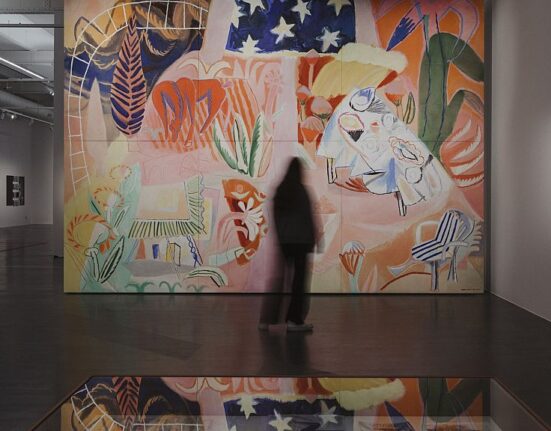The influence of European art has shaped the context in which we see our world. From its marvelous statues, paintings and architecture, European art throughout world history continues to fascinate and inspire generations.
“Rick Steves’ Art of Europe” is a new PBS series airing on WABE TV, weaving centuries of visual art into an unforgettable story. The phenomenally popular travel host Rick Steves joined “City Lights” host Lois Reitzes via Zoom to talk about the new series.
Interview highlights follow below.
How “Art of Europe” tackles the big questions about art history:
“I’ve been making TV shows about traveling and culture for 30 years for public television, and I’ve always included a little bit of art in every one of our episodes. We’ve made 150 or so episodes over the years,” said Steves. “But over the decades, we’ve amassed such an archive, and it is such a fascinating story, and I’ve long wanted to put it all together in a six-hour story that takes you from the prehistoric cave paintings right up to the art of our generation.”
“‘Why is Gothic [architecture] such a big deal?’ ‘What was revolutionary about the Impressionist movement?’ You know, ‘What is Cubism?’ These basic things. And I know from my own experience, if you can understand what Gothic is all about before you step into that cathedral, you’ll excitedly nudge your partner and say, ‘Isn’t this a marvelous improvement over Romanesque?’” Steves laughed. “It’s amazing what they could do 800 years ago, and to understand why did they do that, and how did they do that, for me, it’s just a thrill. Plus, it’s flat-out beautiful… I just never get tired of looking at the beautiful Botticelli paintings and the beautiful Van Gogh sunflowers, the beautiful Michelangelo carvings and the beautiful stained glass that survives.”
On the inclusion of Egyptian art in a survey of Europe:
“That was a big decision, because of course it’s not in Europe, but it was kind of in Western civilization. So I suppose a more complete title might be ‘The Art of Western Civilization,’” Steves said. “In our first hour, we track the art as it goes from Megalithic, Stonehenge kind of culture, and then all of a sudden we have civilizations popping up, and it progresses from Egypt to Crete for the Minoans, and then to Mycenae, and then to Athens as the torch of civilization is passed evermore westward, and Egyptian art is just flat out beautiful and fascinating. So it’s part of the story; it had an influence on Greece, which had an influence on Rome, which had an influence on us.”
Acknowledging histories of colonial abuse and Eurocentrism:
“We talk pretty boldly about how Europe raped, pillaged and plundered its way into dominance as part of the story. But this is a European story, and in the way Europe would enslave people, of course it’s a big part of [the story]. So the art that powered [culture] in Spain and Portugal after the Age of Discovery would be included. But in the 20th century, things become more diverse and more inclusive, but until then, it really was a world of elites, and you know how the power structure goes; and that has changed, and that has evolved, and we’ve been able to track it. But Kenneth Clark did a series that inspired me when I was young. It was called ‘Civilization.’ And really, to be honest, it was European civilization, but that was before a more tuned-in age, and today nobody would call it ‘Civilization.’ You would call it ‘European Civilization,’ if that was the focus.”
How art and travel expand horizons and broaden perspectives:
“I joke that my mission, with my hundred workmates here in Seattle at ‘Rick Steve’s Europe,’ is to ‘equip and inspire Americans to venture beyond Orlando.’ I mean, Orlando’s fun two or three times, but you know, after that you could try Portugal. It’s not gonna bite you,” Steves said.
He went on, “Now, from an art point of view, we can have the same kind of enrichment through our travels if we understand what we’re looking at. That can be, if we can understand what causes poverty, if that means what threatens democracy, if that means why there are the impacts of wars, or how some societies are more just and equitable than other societies. We can learn that as we travel, and we can bring that home, and we can also learn from where we’ve come just by studying art, and how societies have worked in the past. And, you know, all through the ages, art has had an agenda. It generally has served as propaganda, either for rulers or for rich people or for religious leaders. We need to understand that in order to be more savvy, and we can learn a lot from it.”
Rick Steves’ new series “Art of Europe” is now streaming on PBS at https://www.pbs.org/show/rick-steves-art-europe/, and the program airs on WABE TV on Friday at 4 pm and on Saturday at 2 pm.






